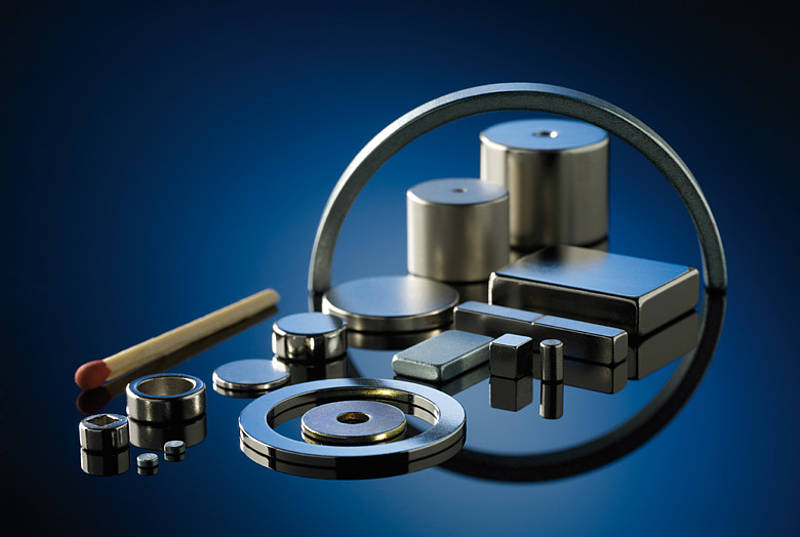Understanding Super Strong Materials—NdFeB

Sintered NdFeB, as the earliest preparation process and the most universally applicable, has driven the rapid development of rare earth permanent magnet materials. Sintered NdFeB, with its strong magnetic anisotropy and low-cost raw material input, has become a research target for many countries. Sintered NdFeB permanent magnet materials utilize powder metallurgy. The smelted alloy is made into powder and pressed into a compact in a magnetic field. The compact is then sintered in an inert gas or vacuum to achieve densification. Furthermore, to improve the coercivity of the magnet, aging heat treatment is usually required. The process flow is as follows: raw material preparation → smelting → powder preparation → pressing → sintering and tempering → magnetic testing → grinding → machining → electroplating → finished product.
Unlike sintered NdFeB, the individual powder particles of bonded magnets need to have sufficiently high coercivity. Once the multiphase structure and microstructure required for high coercivity are severely damaged during the powder preparation process, it will be impossible to produce good bonded magnets. Therefore, by using the method of melt-spinning rapid quenching magnetic powder, the hot molten alloy is first poured or sprayed onto a high-speed rotating water-cooled copper wheel to form a thin strip with a thickness of 100 μm.
The manufacture of hot-pressed/hot-deformed magnets requires starting with rapidly quenched Nd-Fe-B magnetic powder, rather than directly using cast alloys. By employing over-quenching (rapid cooling) conditions, finer grains, or even amorphous magnetic powder, are prepared. During hot pressing and hot deformation, the grains are heated and grown to near single-domain size, thus achieving high coercivity in the final magnet. The hot pressing process involves placing the magnetic powder in a mold and applying pressure at high temperature to force it into an isotropic, solid-density magnet.
Application
Permanent Magnet Motors
In permanent magnet motors, the use of permanent magnets for excitation not only reduces power consumption and saves energy, but also improves motor performance.
Magnetic Machinery
Magnetic machinery operates using the repulsive force of like poles or the attractive force of unlike poles in magnets. This requires permanent magnets with high remanence and high intrinsic coercivity. Furthermore, due to the principle of attraction between unlike poles, magnetic drives can be constructed using non-contact transmission, offering advantages such as no friction and noise. Therefore, high-performance Nd-Fe-B magnets are widely used in drive components of mining machinery, magnetic bearings in gyroscopes and turbines in satellites and spacecraft, and rotor bearings in centrifugal pumps for assisting cardiac function in medical equipment.
Aerospace
Rare-earth permanent magnet materials are indispensable for rocket launches, satellite positioning, and communication technologies. High-performance sintered Nd-Fe-B is particularly useful in microwave transmitting/receiving systems for radar. Utilizing the combined effect of a constant magnetic field and an alternating microwave magnetic field, ferromagnetic resonance occurs, allowing for the fabrication of microwave circulators, isolators, etc. Consumer Electronics
3C consumer electronics has always been an important downstream industry for sintered NdFeB. Sintered NdFeB possesses characteristics such as high magnetic energy product, which aligns with the miniaturization, lightweighting, and thinning trends in 3C consumer electronics products. It is widely used in electronic components such as VCMs, mobile phone linear motors, cameras, headphones, speakers, and spindle drive motors.
